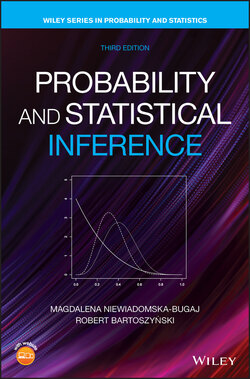Читать книгу Probability and Statistical Inference - Robert Bartoszynski - Страница 70
Example 3.1 Cartesian Products
ОглавлениеOne of the most common operations on sets is the Cartesian product. If and are two sets, their Cartesian product is defined as the set of all ordered pairs , where and . For instance, if consists of elements and , while consists of the digits 1, 2, and 3, then the Cartesian product contains the six pairs
(3.1)
Observe that the Cartesian product is an operation quite distinct from the set‐theoretical product . For instance, in the above case, , since and have no elements in common. Also, while , for Cartesian products in general. In cases when there is no danger of confusion, we will use the term product for Cartesian product.
Identifying now the first and second operation with “choice of an element from set ” and “choice of an element from set ,” we obtain the following consequence of Theorem 3.2.1:
Theorem 3.2.2 (Multiplication Rule) If and are finite sets consisting, respectively, of and elements, then the Cartesian product consists of elements.
Theorem 3.2.2 allows for an immediate generalization, we can define Cartesian products of more than two sets. Thus, if are some sets, then their Cartesian product is the set of all ‐tuples with . By easy induction, Theorem 3.2.2 can now be generalized as follows:
Theorem 3.2.3 If are finite, with consisting of elements , then contains elements.
